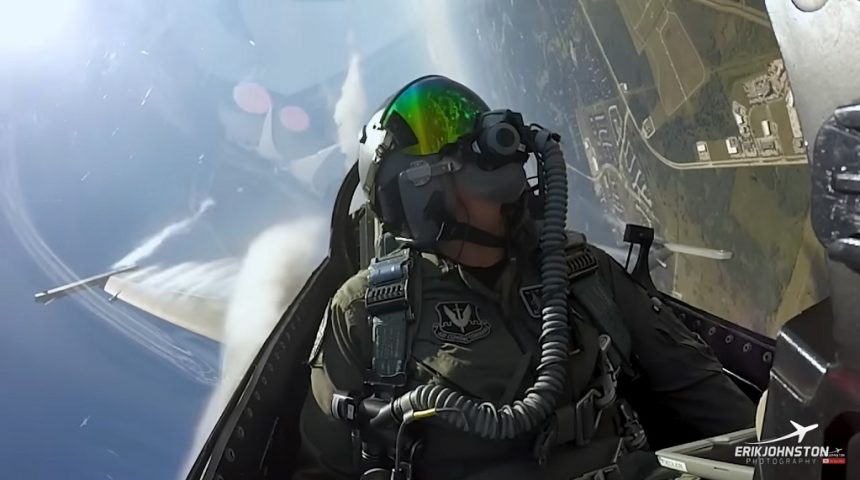Capt. Aimee “Rebel” Fiedler takes us through the various maneuvers of the F-16 display during the Wings Over Houston Airshow.
As the 2022 air show season draws to a close, our friend Erick Johnston strikes again with an impressive video recorded in collaboration with the U.S. Air Force Viper Demo Team during the latest edition of the Wings Over Houston air show. Capt. Aimee “Rebel” Fiedler, Viper Demo Team commander and pilot, takes us through each phase of her display, from the pre-flight checks to the shutdown after landing, giving us insights and comments throughout the video.
As usual, Rebel flew her demo with “Venom”, the special color F-16 assigned to the team and unveiled shortly before the beginning of the 2020 airshow season. Inspired by the F-16’s nickname, snake scales are painted across the airframe, painted in the team’s signature black and yellow colors. The livery has been designed as if the aircraft was an extension of the snake in the logo painted on the tail, going all the way to the front of the F-16 which represents the head of the snake, as it can be seen from the eyes painted below the cockpit.
The video begins with Capt. Fiedler going through the preflight checks with the help of the two crew chiefs, before strapping in the jet. As she moves through the checklist items, Rebel describes some of the various checks she performs before departing, like the SEC check (secondary engine mode), EPU (Emergency Power Unit) check and the flight controls (both primary and backup channels) checks.
At the same time, we can also hear the various radio communications with the air traffic control, the show’s air boss and the team’s safety officer. After all the checks and a quick taxi, the F-16 is ready to perform a high-performance takeoff and begin the Viper Demo performance. The clean F-16 can showcase its power and maneuverability in a unique way, compared to an aircraft with its usual loadout of fuel tanks, pods and weapons.
For example, as explained by Major Garret “Toro” Schmitz, the former Viper Demo pilot, a normal rotation speed of a Viper at mil power (max power without afterburner) would be 146 kts with a takeoff speed of 156 kts. The F-16 in a clean configuration for the demo executes a high-performance takeoff, rotating at just about 100 kts and lifting off at about 120-130 kts in 900 ft of runway.
This is also thanks to the F-16’s engine, which provides 30,000 lb of thrust to the 28,000 lb jet in clean configuration. In this “sports car” version, the pilot can show the crowd what the F-16 can do low to the ground and at the edge of its flight envelope. This completely clean and sleek configuration also allows the Viper to supercruise (as you may already know, supercruise is the ability of an aircraft to fly supersonic without using the afterburner.
The video then alternates between the cockpit and ground cameras, showing each maneuver from both points of view. You can hear Rebel calling out each maneuver over the radio, while also relaying flight parameters to the safety officers, which cross-checks them with the corresponding ones on the approved Viper Demo manual before clearing the execution of the maneuver. This way the safe execution of the maneuvers is always assured, reducing risks for both pilots and public at the air show.
As in many performances of the Air Combat Command demonstration teams, there is an interlude for the Heritage Flight, which presents the evolution of the U.S. Air Force air power by flying today’s state-of-the-art fighter aircraft in close formation with vintage fighter aircraft from World War 2, Korean War and Vietnam War. In this edition of Wings Over Houston air show, the F-16 performed multiple passes with a P-51D Mustang, and we can appreciate from the cockpit visual how much work goes into keeping a tight and stable formation.









